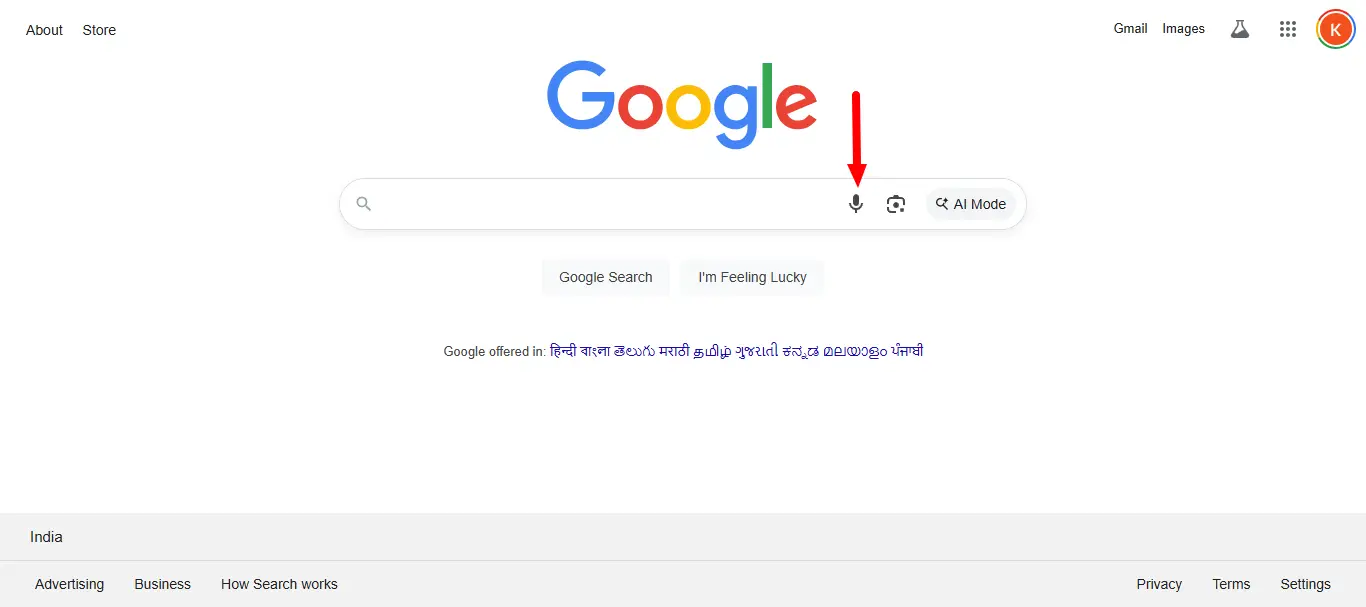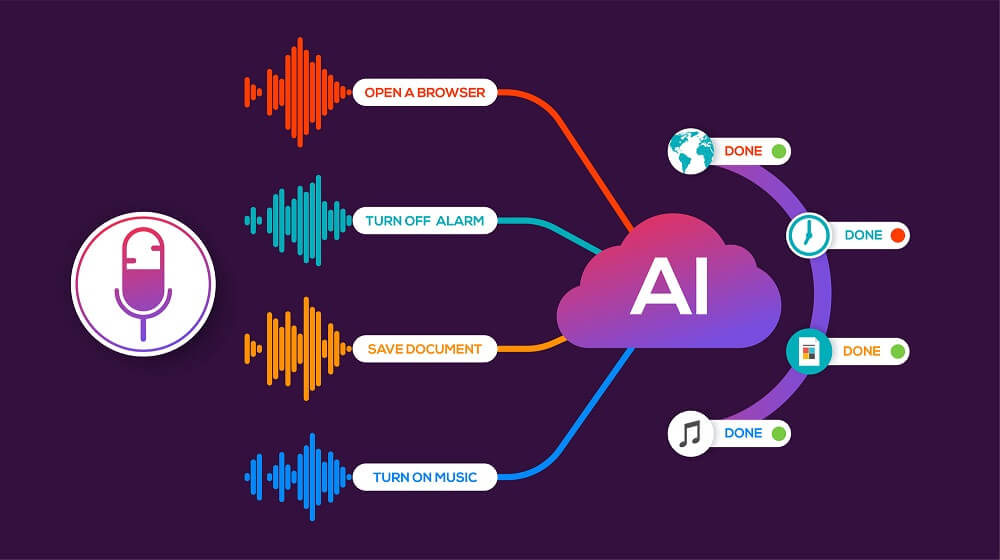Voice Search Optimization: Complete Guide to Boost Online Visibility
Voice search has fundamentally transformed how people interact with search engines, creating new opportunities and challenges for businesses seeking online visibility. As voice-activated devices become ubiquitous in homes and mobile usage continues to surge, voice search optimization has evolved from a nice-to-have feature to an essential component of modern SEO strategy.
The statistics paint a clear picture: over 55% of adults now use voice search daily, with projections indicating that voice commerce will reach $40 billion by 2026. This seismic shift in search behavior demands immediate attention from marketers, business owners, and SEO professionals who want to maintain competitive advantage in an increasingly voice-driven digital landscape.

Voice Search Optimization: The Complete Guide to Enhancing Your Online Visibility in 2025
Voice search optimization represents a paradigm shift from traditional keyword-based SEO to conversational, intent-driven optimization. Unlike typed queries, voice searches tend to be longer, more specific, and mirror natural speech patterns. When someone types, they might search for "best pizza NYC," but when speaking, they're more likely to ask, "What's the best pizza place near me in New York City?"
This fundamental difference in query structure has profound implications for how search engines interpret and respond to user intent. Voice assistants like Google Assistant, Amazon Alexa, and Apple's Siri utilize advanced natural language processing (NLP) to understand context, sentiment, and user intent beyond simple keyword matching.
The technology behind voice search relies on sophisticated machine learning algorithms that continuously improve their understanding of human speech patterns, accents, and contextual nuances. These systems don't just match keywords; they interpret meaning, consider user history, and factor in location data to provide the most relevant results.
Voice Search vs. Traditional Search: Key Differences
Understanding the distinctions between voice and text search is crucial for effective voice search optimization. Traditional text searches average 2-3 words per query, while voice searches typically contain 7-10 words. This expansion creates opportunities for businesses to target longer, more specific phrases that often indicate higher purchase intent.
Voice searches demonstrate distinct patterns in user behavior. People use voice search primarily for:
Local Information Seeking: "Where's the nearest coffee shop?" or "What time does the pharmacy close today?" represent the majority of voice queries, with over 76% of smart speaker users performing local searches weekly.
Quick Facts and Answers: Voice users frequently seek immediate answers to specific questions, making featured snippet optimization crucial for voice search visibility.
Hands-Free Convenience: Voice search usage spikes during activities like cooking, driving, or exercising, when typing isn't practical.
Multitasking Support: Users often perform voice searches while engaged in other activities, expecting rapid, accurate responses without visual interaction.
The conversational nature of voice queries also means they often include question words like "what," "where," "when," "how," and "why." This creates opportunities for businesses to optimize content around these question-based searches, particularly through FAQ sections and comprehensive answer formats.
Technical Foundation for Voice Search Optimization

Successful voice search optimization begins with a solid technical foundation. Search engines prioritize fast-loading, mobile-optimized websites for voice search results, as voice users expect immediate responses to their queries.
Page Speed Optimization forms the cornerstone of voice search technical requirements. Voice search results typically load 52% faster than average web pages, making speed optimization non-negotiable. Implementing techniques like image compression, browser caching, and content delivery networks (CDNs) can significantly improve voice search performance.
Mobile-First Design isn't optional for voice search optimization. With over 60% of voice searches conducted on mobile devices, responsive design and mobile optimization directly impact voice search rankings. Google's mobile-first indexing means the mobile version of your website determines search rankings across all devices.
HTTPS Security has become a ranking factor for voice search results. Search engines prioritize secure websites for voice queries, particularly those involving personal information or local business details. Implementing SSL certificates and ensuring all pages load over HTTPS protects user data and improves search visibility.
Schema Markup Implementation helps search engines understand your content context, making it more likely to appear in voice search results. Structured data markup for business information, reviews, FAQs, and product details provides search engines with clear signals about your content's relevance and authority.
Content Strategy for Voice Search Success

Voice search optimization requires a fundamental shift in content creation approach. Instead of targeting short, keyword-focused content, successful voice search strategies prioritize comprehensive, conversational content that directly answers user questions.
FAQ Content Development represents one of the most effective voice search optimization strategies. Creating detailed FAQ sections that address common customer questions in natural language helps capture voice search traffic. These sections should use conversational language that mirrors how people actually speak, incorporating question phrases and complete answers.
Long-Tail Keyword Integration becomes crucial for voice search optimization. While traditional SEO might target "Italian restaurant," voice search optimization should focus on phrases like "What's the best Italian restaurant for a romantic dinner near downtown?" These longer, more specific queries often indicate higher commercial intent and face less competition.
Featured Snippet Optimization directly impacts voice search visibility, as many voice assistants read featured snippets as voice search answers. Creating content specifically designed to earn featured snippets involves structuring information clearly, using bullet points and numbered lists, and providing direct answers to common questions.
Local Content Creation addresses the local nature of most voice searches. Developing content around local events, neighborhood information, and community-specific topics helps establish local authority and improves visibility for location-based voice queries.
The key to successful voice search content lies in understanding user intent behind conversational queries. Voice search users often seek immediate, actionable information, making it essential to provide clear, concise answers while maintaining comprehensive coverage of topics.
Local SEO Integration for Voice Search

Local SEO and voice search optimization are inherently connected, with local queries representing the majority of voice searches. Optimizing for local voice search requires a comprehensive approach that extends beyond traditional local SEO tactics.
Google My Business Optimization forms the foundation of local voice search success. Complete, accurate GMB profiles with up-to-date business information, regular posts, and customer reviews significantly improve local voice search visibility. Voice assistants frequently pull information directly from GMB listings when responding to local queries.
NAP Consistency (Name, Address, Phone Number) across all online platforms becomes critical for voice search optimization. Inconsistent business information confuses search engines and reduces the likelihood of appearing in voice search results. Maintaining identical NAP information across your website, social media profiles, and directory listings strengthens local search signals.
Local Schema Markup provides search engines with detailed business information, including operating hours, services offered, and contact information. This structured data helps voice assistants provide accurate, comprehensive answers to local business queries.
Customer Review Management directly impacts local voice search performance. Voice assistants often mention review ratings and recent customer feedback when recommending local businesses. Encouraging positive reviews and responding professionally to all feedback improves local search authority and voice search visibility.
Location-Specific Content Creation helps establish local relevance for voice search queries. Developing content about local events, community involvement, and neighborhood-specific information demonstrates local expertise and improves rankings for location-based voice searches.
Advanced Voice Search Optimization Techniques
Beyond basic optimization, advanced voice search strategies involve understanding user behavior patterns and optimizing for specific voice search scenarios.
Conversational Keyword Research requires tools and techniques specifically designed for voice search analysis. Traditional keyword research tools often miss the conversational phrases and question-based queries common in voice search. Using tools like Answer the Public, SEMrush's Voice Search Analytics, and Google's People Also Ask feature helps identify voice search opportunities.
Voice Search Analytics Implementation involves setting up tracking systems to monitor voice search performance. While Google Analytics doesn't explicitly separate voice traffic, analyzing long-tail organic traffic and question-based queries provides insights into voice search performance.
Multilingual Voice Search Optimization becomes important for businesses serving diverse communities. Voice search queries often occur in users' native languages, making multilingual content optimization crucial for comprehensive voice search coverage.
Voice Commerce Preparation involves optimizing product information and purchasing processes for voice-activated transactions. As voice commerce grows, businesses need to ensure product details, pricing, and purchase processes are voice-search friendly.
Measuring Voice Search Optimization Success
Tracking voice search optimization performance requires a combination of traditional SEO metrics and voice-specific indicators. While direct voice search traffic measurement remains challenging, several key performance indicators provide insights into voice search success.
Featured Snippet Tracking serves as a primary voice search performance indicator. Monitoring featured snippet rankings and the types of queries triggering these snippets helps gauge voice search optimization effectiveness.
Long-Tail Organic Traffic Analysis reveals voice search performance patterns. Increases in traffic from longer, conversational queries often indicate successful voice search optimization efforts.
Local Search Performance Metrics including GMB insights, local pack rankings, and location-based organic traffic provide valuable voice search performance data.
Page Speed and Mobile Performance Monitoring directly correlates with voice search success. Regular monitoring of Core Web Vitals and mobile usability metrics helps maintain technical requirements for voice search optimization.
Question-Based Query Performance can be tracked through Google Search Console by analyzing queries containing question words and conversational phrases.
Common Voice Search Optimization Mistakes
Understanding common pitfalls in voice search optimization helps businesses avoid costly mistakes and accelerate their optimization efforts.
Over-Optimization for Voice Search can negatively impact traditional search performance. Balancing voice search optimization with traditional SEO ensures comprehensive search visibility without sacrificing existing rankings.
Ignoring User Intent behind voice queries leads to optimization efforts that don't align with user needs. Voice search users often seek immediate, actionable information, making intent understanding crucial for optimization success.
Neglecting Mobile Optimization undermines voice search efforts, as mobile optimization directly impacts voice search performance. Ensuring fast loading times, responsive design, and mobile-friendly user experience is essential for voice search success.
Keyword Stuffing in Conversational Content creates awkward, unnatural content that doesn't serve voice search users effectively. Voice search optimization requires natural, conversational language that flows naturally while incorporating relevant keywords.
Overlooking Local Search Signals limits voice search visibility, particularly for businesses serving local markets. Complete local SEO optimization is essential for voice search success.
Future of Voice Search Optimization
Voice search technology continues evolving rapidly, with new developments shaping optimization strategies and user behavior patterns. Understanding these trends helps businesses prepare for future voice search opportunities.
Visual Voice Search Integration combines voice commands with visual search capabilities, creating new optimization opportunities. Businesses need to consider how images, videos, and visual content interact with voice search queries.
AI-Powered Personalization in voice search results means optimization strategies must consider individual user preferences, search history, and behavioral patterns. This personalization trend requires more sophisticated, user-focused optimization approaches.
Voice Search in E-commerce continues expanding, with voice-activated purchasing becoming more common. Businesses need to optimize product information, pricing, and purchase processes for voice search users.
Cross-Platform Voice Search Optimization becomes increasingly important as voice assistants expand beyond smartphones and smart speakers to cars, appliances, and other connected devices.
Implementing Your Voice Search Optimization Strategy
Successful voice search optimization requires a systematic approach that addresses technical requirements, content optimization, and local search factors simultaneously.
Phase 1: Technical Foundation (Weeks 1-4) Begin with technical optimization, ensuring your website meets voice search requirements for speed, mobile optimization, and security. Implement schema markup and address any technical SEO issues that could impact voice search performance.
Phase 2: Content Optimization (Weeks 5-12) Develop conversational content that addresses common customer questions. Create comprehensive FAQ sections, optimize existing content for question-based queries, and develop location-specific content for local voice search optimization.
Phase 3: Local Search Integration (Weeks 13-16) Optimize Google My Business profiles, ensure NAP consistency across all platforms, and implement local schema markup. Focus on encouraging customer reviews and developing location-specific content.
Phase 4: Monitoring and Refinement (Ongoing) Implement tracking systems to monitor voice search performance, analyze results, and refine optimization strategies based on performance data and changing user behavior patterns.
Voice Search Statistics 2025: The Current Landscape
Voice search has reached unprecedented adoption levels in 2025. Around 20.5% of people worldwide actively use voice search, supported by an astonishing 8.4 billion voice assistants in use, outnumbering the global population. This massive adoption indicates that many users have multiple voice-enabled devices across different platforms.
In the U.S. alone, 153.5 million people rely on voice assistants, with Siri leading at 86.5 million users. However, when looking at the broader ecosystem, Google Assistant leads with 88.8 million users in 2024, up from 81.5 million in 2022. Alexa has 75.6 million users in 2024, rising from 71.6 million in 2022.
Growth Trajectory and Trends
The momentum behind voice search continues to accelerate. Between 2020 and 2024, monthly usage of major tools has surged among Americans - Google Assistant leads the pack with a 46% jump in that timeframe, Siri's close behind at 40%, and Alexa's climbed 26%.
Mobile usage remains a dominant factor, with about 27% of people using voice search on their mobile devices and mobile users are 3x more likely to use voice search. Additionally, 71% of internet users prefer to conduct a query through voice search instead of typing.
Platform-Specific Voice Search Statistics
Google Voice Search

Google maintains its position as the dominant force in voice search technology. 27% of searches in the Google App are now done by voice, demonstrating the significant shift toward voice-based interactions within Google's ecosystem.
Key Google voice search metrics:
- 40.7% of all answers from voice search are pulled from a Featured Snippet
- The average voice search results have a length of 29 words
- The average answer to a voice search query on Google Assistant was 41 words
- 1 billion voice searches occur each month via mobile and voice search devices
YouTube Voice Search

YouTube has integrated voice search capabilities across its platform, particularly on mobile devices and smart TVs. While specific YouTube voice search statistics are limited in current data, the platform benefits from Google's voice search technology integration.
YouTube voice search usage patterns:
- Voice searches on YouTube typically focus on content discovery
- Mobile YouTube users frequently use voice to search for videos while multitasking
- Smart TV users rely heavily on voice search for content navigation
- YouTube's algorithm considers voice search queries for content recommendations
Other Platform Statistics
Amazon Alexa:
- Alexa returned an average answer length of just 11 words
- Smart speaker integration drives significant usage for shopping and local business queries
General Voice Assistant Usage:
- The average answer length across all assistants was 23 words
- 68% of individuals turn to digital assistants for quick fact-checking
Business Impact and Commercial Statistics
Local Business and E-commerce
Voice search drives substantial business value, particularly for local businesses. 46% of users perform voice searches daily to find information about local businesses, while 58% of people use voice search to get details on local businesses because it's convenient for those on the go.
The commercial impact is significant, with voice search driving more than $2 billion in sales. Additionally, 43% of people shop online via voice-enabled devices, indicating growing comfort with voice commerce.
Query Patterns and Keywords
Understanding how people structure voice queries is crucial for optimization. Nearly 20% of all voice search queries are triggered by a set of 25 keywords. These consist mainly of question words like "how" or "what" and adjectives like "best" or "easy".
Voice searches demonstrate distinct characteristics:
- Around 80% of voice searches are predicted to be conversational by 2024, diverging from traditional search methods
- Specific keyword usage (like "best," "easy," "free," "top," "list," etc.) in voice searches is predicted to increase by 20%
- Expect a major surge in "near me" and local searches
How to Optimize for Voice Search Across Platforms?
Google Voice Search Optimization
1. Featured Snippet Optimization Since 40.7% of all answers from voice search are pulled from a Featured Snippet, targeting featured snippets is crucial for Google voice search visibility.
- Structure content with clear questions and concise answers
- Use numbered lists, bullet points, and step-by-step instructions
- Target question-based keywords (who, what, where, when, why, how)
- Keep answers between 40-60 words for optimal featured snippet length
2. Conversational Content Creation Create content that matches natural speech patterns:
- Use long-tail keywords that reflect conversational queries
- Include FAQ sections with naturally worded questions
- Write in a conversational tone that mirrors how people speak
- Target local intent with "near me" and location-specific content
3. Technical SEO for Google Voice Search
- Ensure mobile-first optimization with fast loading speeds
- Implement structured data markup (Schema.org) for better content understanding
- Optimize for Core Web Vitals to meet Google's page experience requirements
- Use HTTPS security across all pages
YouTube Voice Search Optimization
1. Video Title and Description Optimization
Understanding Conversational Keywords: Conversational keywords mirror natural speech patterns and are typically longer than traditional search terms. Instead of "SEO tips," voice searchers ask "What are the best SEO tips for beginners?"
Implementation Strategies:
Question-Based Title Formats:
"How to [Action] + [Topic] + [Qualifier]"
Example: "How to Optimize Your Website for Voice Search in 2025"
"What is [Topic] + [Context/Benefit]"
Example: "What is Voice Search Optimization and Why Your Business Needs It"
"Why [Statement] + [Explanation]"
Example: "Why Voice Search Will Change Digital Marketing Forever"
Long-Tail Conversational Titles:
- Traditional: "Cooking Pasta"
- Voice-Optimized: "How to Cook Perfect Pasta Every Time at Home"
- Traditional: "Guitar Lessons"
- Voice-Optimized: "What's the Easiest Way to Learn Guitar for Complete Beginners"
Title Length Optimization:
- Keep titles between 60-70 characters for full mobile display
- Front-load important keywords while maintaining natural flow
- Include emotional triggers: "Easy," "Quick," "Ultimate," "Complete"
Question-Based Titles That Match Voice Search Queries
Research Voice Search Questions: Use tools like Answer the Public, Google's "People Also Ask," and YouTube's search suggestions to identify common voice queries in your niche.
Popular Voice Search Question Patterns:
"How" Questions (Tutorial Focus):
- "How do I fix [problem]?"
- "How can I improve [skill/situation]?"
- "How long does it take to [accomplish task]?"
"What" Questions (Information Focus):
- "What is the best [product/service] for [specific need]?"
- "What are the benefits of [topic]?"
- "What should I know about [subject]?"
"Where" Questions (Location Focus):
- "Where can I find [service] near me?"
- "Where should I go for [activity] in [location]?"
- "Where do I start with [new skill/hobby]?"
"Why" Questions (Explanation Focus):
- "Why is [topic] important for [audience]?"
- "Why should I choose [option A] over [option B]?"
- "Why do experts recommend [solution]?"
Detailed Video Descriptions with Natural Language
Description Structure for Voice Search:
Opening Hook (First 125 characters): Write a compelling summary that answers the main question your video addresses. This appears in search results and should include your primary keyword naturally.
Example: "Learn the complete guide to voice search optimization for YouTube. This step-by-step tutorial shows you exactly how to optimize your videos for voice search queries, increase visibility, and grow your channel organically."
Detailed Content Breakdown:
- Timestamp key topics covered (YouTube rewards detailed descriptions)
- Include natural variations of your target keywords
- Write in conversational tone matching your video's speaking style
- Address related questions viewers might have
Natural Language Integration: Instead of keyword stuffing, use phrases like:
- "In this video, you'll discover..."
- "I'll walk you through..."
- "By the end of this tutorial, you'll be able to..."
- "Many people ask me about..."
Description Template:
[Hook with main keyword - 125 characters]
In this [video type], I'll show you [main benefit/outcome]. Whether you're [audience segment 1] or [audience segment 2], this [content type] will help you [specific result].
🎯 What You'll Learn:
- [Benefit 1 with natural keyword variation]
- [Benefit 2 addressing common question]
- [Benefit 3 with location/context if relevant]
⏰ Timestamps:
0:00 - Introduction to [topic]
2:15 - [First main point]
5:30 - [Second main point]
8:45 - [Third main point]
12:00 - Common mistakes to avoid
15:20 - Next steps and resources
[Additional conversational content addressing related questions]
[Call-to-action using natural language]
Location-Specific Terms for Local Content
Local SEO Integration:
- Include city, state, and region names naturally in titles and descriptions
- Use neighborhood names and local landmarks
- Mention local events, businesses, or cultural references
Local Title Examples:
- "Best Coffee Shops in Downtown Seattle: Local's Complete Guide"
- "How to Start a Small Business in Austin, Texas: Complete 2025 Guide"
- "What's the Real Estate Market Like in Miami Right Now?"
Geographic Keywords in Descriptions:
- Natural integration: "As someone who's lived in Chicago for 10 years..."
- Service area mentions: "This applies whether you're in Dallas, Fort Worth, or anywhere in North Texas..."
- Local context: "Following Texas state regulations..." or "Based on California requirements..."
2. Video Content Optimization
Question-Answering Video Structure:
Hook (First 15 seconds):
- State the exact question you're answering
- Promise a specific outcome or timeframe
- Create urgency or relevance
Example: "Are you wondering how to optimize your YouTube videos for voice search? In the next 12 minutes, I'll show you the exact 7-step process I use to get my videos found through voice search, including the tool I use to research voice search keywords."
Main Content Structure:
- Problem Acknowledgment: Validate the viewer's question/concern
- Solution Overview: Brief outline of what you'll cover
- Step-by-Step Process: Detailed walkthrough with examples
- Common Mistakes: Address potential pitfalls
- Next Steps: Clear action items
Direct Answer Technique: Always provide a direct answer within the first minute, then expand with details:
- "The short answer is [direct response]. Now let me show you exactly how to do this..."
- "Yes, [confirmation], and here's the step-by-step process..."
- "The three main ways to [solve problem] are [list]. Let's dive into each one..."
Using Clear, Conversational Language
Natural Speech Rhythm:
- Speak at a moderate pace (160-180 words per minute)
- Use natural pauses between concepts
- Vary your tone to maintain engagement
- Include conversational fillers sparingly ("So," "Now," "Here's the thing")
Conversational Phrases:
"Let me show you..."
"Here's what I mean by that..."
"You might be wondering..."
"The thing is..."
"In other words..."
"What this means for you is..."
Question Integration: Regularly pose questions that voice searchers might ask:
- "Now, you might be asking yourself..."
- "The next logical question is..."
- "If you're like most people, you're probably thinking..."
Storytelling Elements:
- Personal anecdotes that relate to the topic
- Case studies with specific examples
- Before/after scenarios
- Step-by-step narratives
Timestamp Implementation for Different Topics
Chapter-Style Timestamps: Use YouTube's chapter feature by including timestamps in your description:
- 0:00 - Introduction: Why Voice Search Matters
- 2:30 - Chapter 1: Understanding Voice Search Behavior
- 5:15 - Chapter 2: Keyword Research for Voice Search
- 8:45 - Chapter 3: Optimizing Video Titles
- 12:20 - Chapter 4: Description Best Practices
- 15:10 - Chapter 5: Technical Optimization
- 18:30 - Conclusion and Next Steps
Micro-Topic Timestamps: For detailed tutorials, include specific action items:
- 0:00 - What we're covering today
- 1:15 - Tool #1: Answer the Public setup
- 3:45 - Finding question-based keywords
- 6:20 - Analyzing search volume and competition
- 9:10 - Tool #2: YouTube search suggestions
- 11:30 - Creating your keyword list
- 13:45 - Implementing keywords in titles
- 16:20 - Common mistakes to avoid
Voice Search-Specific Timestamps: Address voice search queries directly:
- 0:00 - "How do I optimize for voice search?"
- 2:10 - "What tools do I need?"
- 4:50 - "How long does optimization take?"
- 7:30 - "What are the biggest mistakes?"
- 10:15 - "How do I track results?"
Tutorial and How-To Content for Voice Search Intent
Tutorial Video Structure: Problem-Solution Framework:
- Problem Introduction: "Have you ever wondered why your videos aren't showing up in voice search results?"
- Solution Preview: "Today I'm going to show you the exact process..."
- Implementation: Step-by-step demonstration
- Verification: How to check if it's working
- Troubleshooting: Common issues and fixes
How-To Video Best Practices: Screen Recording Optimization:
- Use high-quality screen recording (1080p minimum)
- Include cursor highlighting for clarity
- Zoom in on important interface elements
- Provide both audio explanation and visual demonstration
Live Demonstration:
- Show real examples, not just theory
- Include both successful and unsuccessful attempts
- Explain your thought process during implementation
- Address questions as they arise naturally
Resource Provision:
- Mention tools and resources clearly
- Provide alternative methods for different skill levels
- Include templates or worksheets when applicable
- Reference related videos for deeper learning
3. YouTube-Specific Technical Optimization
YouTube Auto-Caption Editing:
- Review auto-generated captions for accuracy
- Correct technical terms, brand names, and industry jargon
- Add punctuation for better readability
- Include speaker identification for multi-person videos
Manual Caption Best Practices:
- Use proper capitalization and punctuation
- Include sound effects and music descriptions when relevant
- Time captions to match natural speech rhythm
- Break long sentences into readable segments
Transcript Optimization for Voice Search:
Full Transcript in Description: Include a complete, cleaned-up transcript in your video description:
[0:00] Hi everyone, welcome back to my channel. Today we're talking about voice search optimization for YouTube, and I'm going to show you exactly how to optimize your videos so they show up when people use voice search.
[0:15] The first thing you need to understand is that voice search queries are different from typed searches. When someone types, they might search for "YouTube SEO," but when they use voice search, they're more likely to ask "How do I optimize my YouTube videos for search?"
Keyword-Rich Transcripts:
- Include natural variations of your target keywords
- Maintain conversational flow while incorporating search terms
- Address common voice search questions within the transcript
- Use section headers that match potential voice queries
Multi-Platform Voice Search Strategy
1. Universal Best Practices
- Develop content that works across all voice assistants
- Focus on user intent rather than specific platforms
- Create comprehensive FAQ sections
- Optimize for local search across all platforms
2. Platform-Specific Adaptations
- Google Assistant: Focus on featured snippets and local SEO
- Alexa: Optimize for shopping and smart home queries
- Siri: Target Apple ecosystem users with mobile-first content
- YouTube: Create video content that answers common questions
3. Content Strategy Framework
- Research conversational keywords using tools like Answer the Public
- Create content clusters around question-based topics
- Develop location-specific content for local voice searches
- Build authoritative content that establishes expertise
Future Opportunities and Trends

Emerging Technologies
Voice search technology continues evolving with improvements in natural language processing, contextual understanding, and personalization. Businesses should prepare for:
- Increased voice commerce adoption
- Better multilingual voice search capabilities
- Integration with augmented reality and visual search
- Enhanced local search features and recommendations
Strategic Recommendations
To stay ahead in voice search optimization:
- Invest in comprehensive content strategies that address user questions naturally
- Prioritize technical SEO to meet evolving voice search requirements
- Focus on local optimization to capture the majority of voice searches
- Create platform-specific content while maintaining consistent messaging
- Monitor performance continuously and adapt strategies based on user behavior changes
Voice search optimization requires a holistic approach that considers user intent, technical requirements, and platform-specific features. By implementing comprehensive strategies across Google, YouTube, and other voice-enabled platforms, businesses can significantly improve their visibility and capture growing voice search traffic.
Voice Search Optimization: Frequently Asked Questions
1. What is voice search optimization?
Voice search optimization is the process of optimizing your website and content to appear in voice search results. It involves creating conversational content, improving page speed, and targeting long-tail keywords that match how people naturally speak when using voice assistants like Google Assistant, Siri, or Alexa.
2. How do I optimize my website for voice search?
To optimize for voice search, focus on four key areas: create FAQ-style content with natural language, improve your website's loading speed, optimize for local search with complete Google My Business profiles, and use schema markup to help search engines understand your content better.
3. What's the difference between voice search and regular search?
Voice searches are typically longer (7-10 words vs. 2-3 words), more conversational, and often include question words like "what," "where," or "how." Voice users expect immediate answers and frequently search for local information, while text searches can be more exploratory.
4. Why is voice search important for SEO?
Voice search is important because over 55% of adults use voice search daily, and voice commerce is projected to reach $40 billion by 2026. Voice searches often have higher commercial intent and less competition for long-tail keywords, making them valuable for businesses seeking qualified traffic.
5. How can I track voice search performance?
Track voice search performance by monitoring featured snippet rankings, analyzing long-tail keyword traffic in Google Search Console, measuring local search metrics through Google My Business insights, and tracking question-based queries that contain conversational phrases.
6. Does voice search work for local businesses?
Yes, voice search is especially effective for local businesses since 76% of smart speaker users perform local searches weekly. Optimize your Google My Business profile, maintain consistent NAP information, encourage customer reviews, and create location-specific content to improve local voice search visibility.
7. What are the most common voice search optimization mistakes?
Common mistakes include keyword stuffing in conversational content, ignoring mobile optimization, having slow page loading speeds, inconsistent local business information across platforms, and creating content that doesn't match user intent behind voice queries.
Conclusion: Embracing the Voice Search Future
Voice search optimization represents a fundamental shift toward conversational, user-focused SEO strategies. As voice technology adoption accelerates, businesses that optimize for conversational content, technical excellence, and user intent will gain significant competitive advantages.
The key to success lies in understanding that voice search is about meeting users where they are providing immediate, relevant answers in natural language. By implementing comprehensive voice search strategies today, businesses position themselves to capture the growing voice search market and ensure visibility across all search channels.
The future of search is conversational and voice-activated. Companies that embrace this shift now will be best positioned to thrive in our increasingly connected, voice-first digital landscape.





